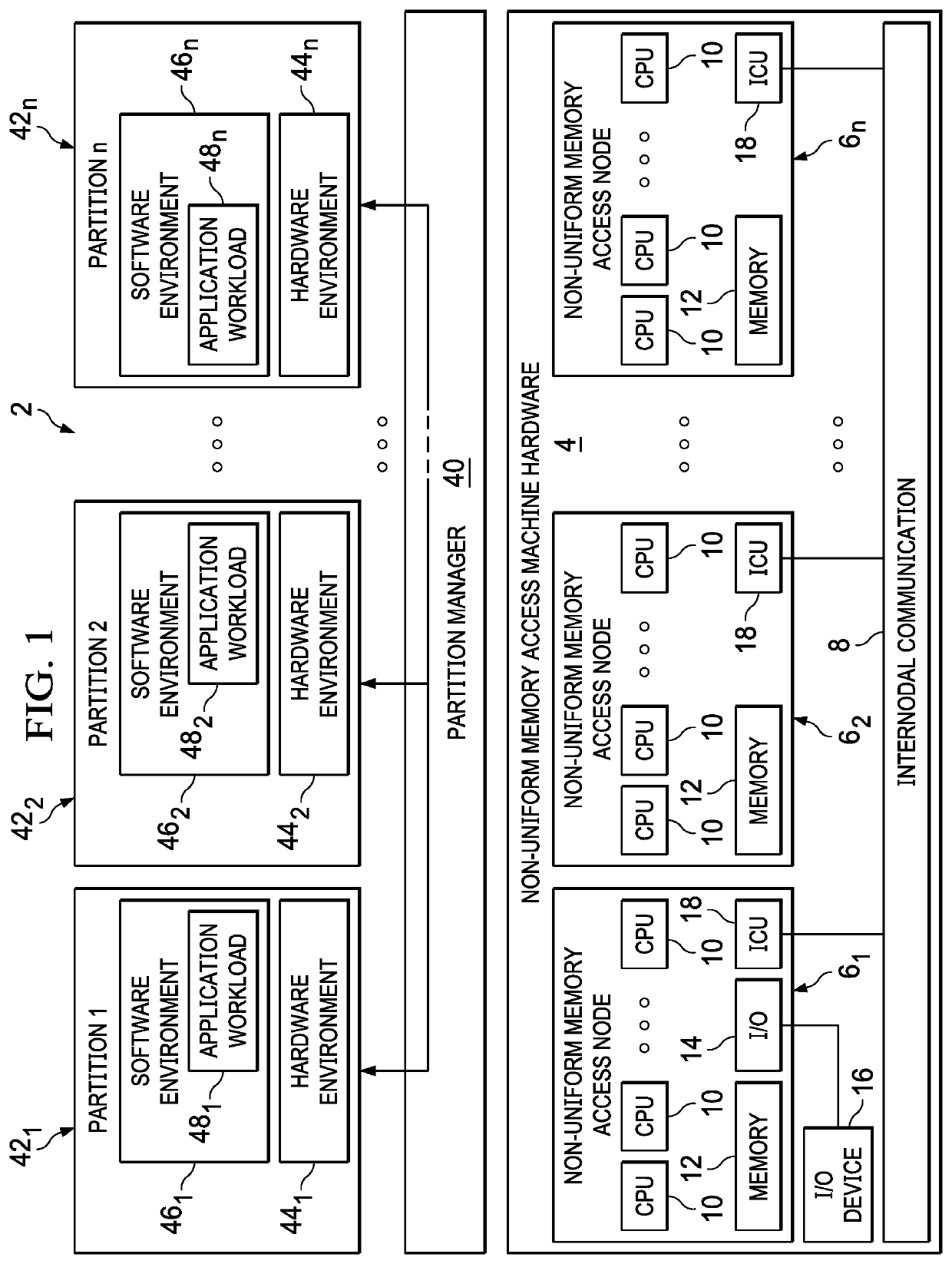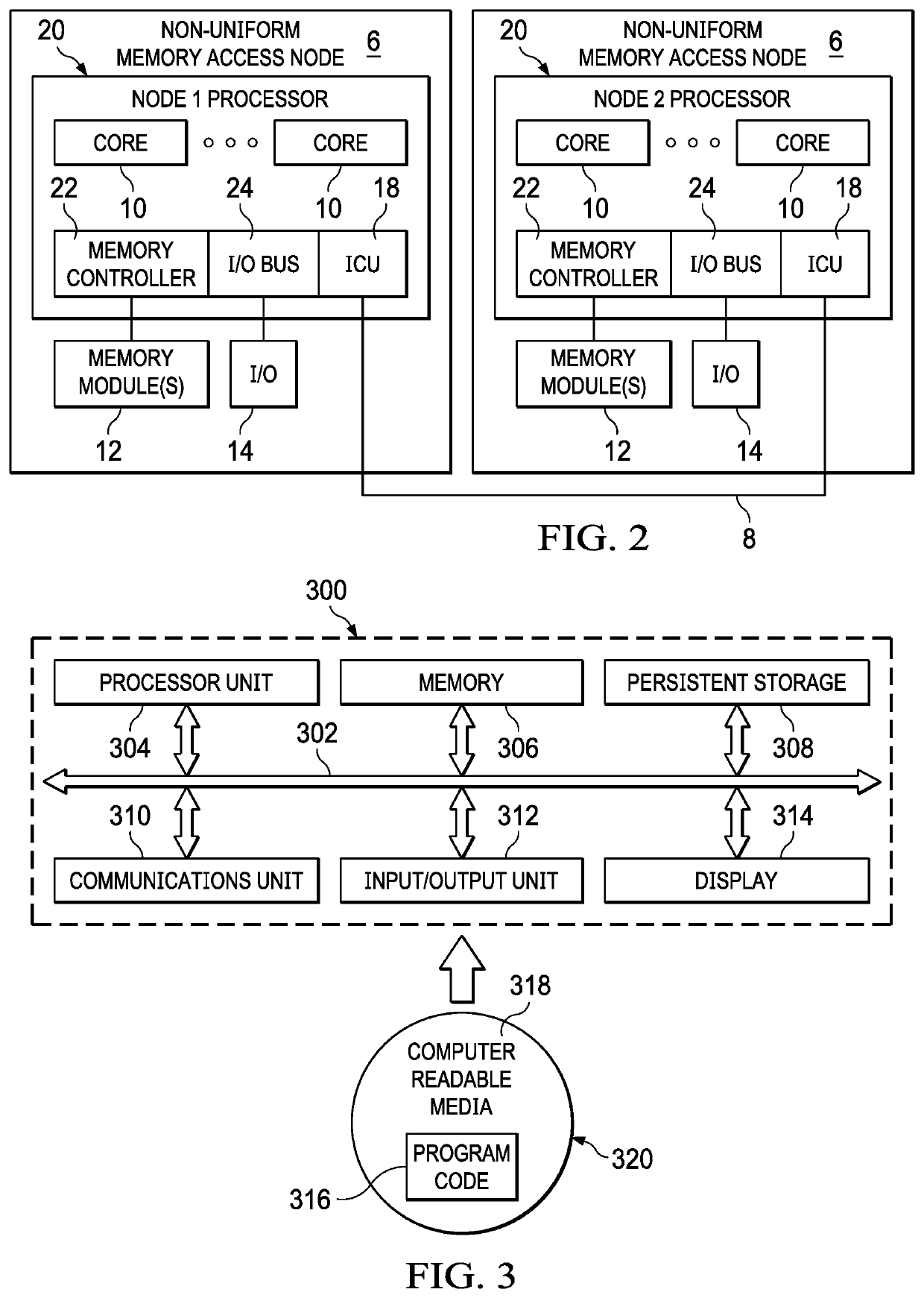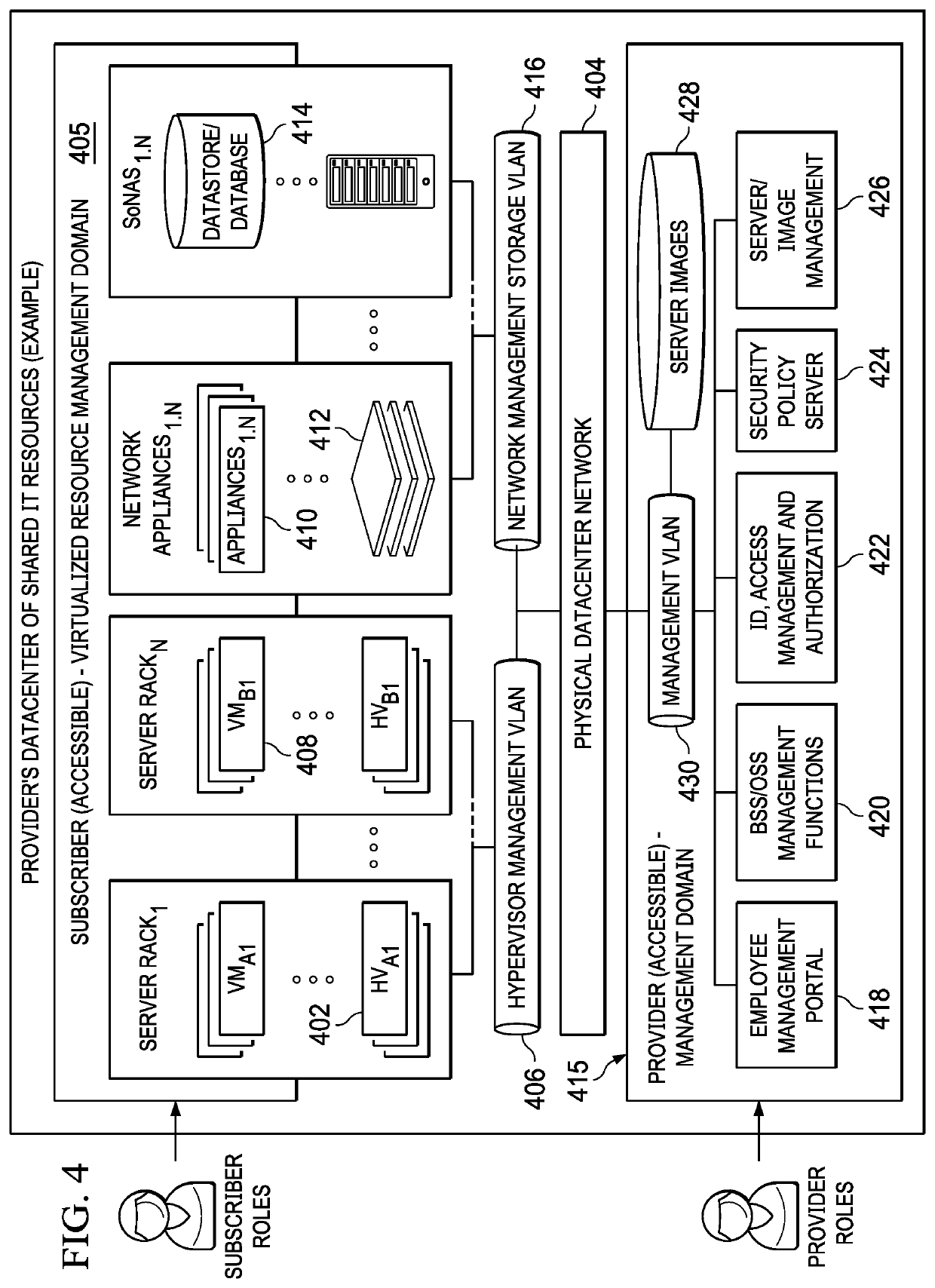Protecting an application by autonomously limiting processing to a determined hardware capacity
a technology of hardware capacity and protection, applied in the direction of program control, multi-programming arrangement, instruments, etc., can solve the problems of exacerbated problems, inability of the application to set limits that reflect hardware capacity, let alone in any type of deterministic manner, etc., to preserve application performance and configure limits.
- Summary
- Abstract
- Description
- Claims
- Application Information
AI Technical Summary
Benefits of technology
Problems solved by technology
Method used
Image
Examples
Embodiment Construction
[0012]By way of background, a logically-partitioned computational machine allows system resources such as CPUs, memory and input / output (I / O) hardware to be assigned to one or more logical partitions or containers. In modern dynamically-partitioned machine environments, partitions can be reconfigured without having to reboot, allowing CPU, memory and I / O resources to be added to, deleted from, or moved between running partitions. Dynamic logical partitioning has been implemented in NUMA (Non-Uniform Memory Access) machines wherein interconnected NUMA hardware nodes share memory and I / O resources.
[0013]Non-Uniform Memory Access (NUMA) refers to multiprocessor systems whose memory is divided into multiple memory nodes. The access time of a memory node depends on the relative locations of the accessing CPU and the accessed node. Normally, each CPU on a NUMA system has a local memory node whose contents can be accessed faster than the memory in the node local to another CPU or the memor...
PUM
 Login to View More
Login to View More Abstract
Description
Claims
Application Information
 Login to View More
Login to View More - R&D Engineer
- R&D Manager
- IP Professional
- Industry Leading Data Capabilities
- Powerful AI technology
- Patent DNA Extraction
Browse by: Latest US Patents, China's latest patents, Technical Efficacy Thesaurus, Application Domain, Technology Topic, Popular Technical Reports.
© 2024 PatSnap. All rights reserved.Legal|Privacy policy|Modern Slavery Act Transparency Statement|Sitemap|About US| Contact US: help@patsnap.com










